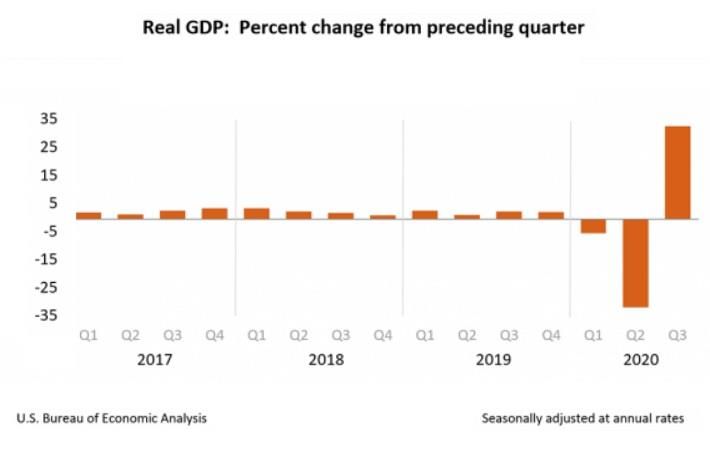
The increases were partly offset by decreases in federal government spending (reflecting fewer fees paid to administer the Paycheck Protection Program loans) and state and local government spending. Imports, which are a subtraction in the calculation of GDP, increased.
In the preceding April-June quarter, real GDP had decreased 31.4 per cent.
The latest GDP estimate is based on source data that are incomplete or subject to further revision by the source agency, BEA said. The "second" estimate for the third quarter, based on more complete data, will be released on November 25, 2020.
The increase in PCE reflected increases in services (led by health care as well as food services and accommodations) and goods (led by motor vehicles and parts as well as clothing and footwear). The increase in private inventory investment primarily reflected an increase in retail trade (led by motor vehicle dealers). The increase in exports primarily reflected an increase in goods (led by automotive vehicles, engines, and parts as well as capital goods). The increase in non-residential fixed investment primarily reflected an increase in equipment (led by transportation equipment). The increase in residential fixed investment primarily reflected an increase in brokers' commissions and other ownership transfer costs.
Current-dollar GDP increased 38.0 per cent, or $1.64 trillion, in the third quarter to a level of $21.16 trillion. In the second quarter, GDP decreased 32.8 per cent, or $2.04 trillion.
The price index for gross domestic purchases increased 3.4 per cent in the third quarter, in contrast to a decrease of 1.4 per cent in the second quarter. The PCE price index increased 3.7 per cent, in contrast to a decrease of 1.6 per cent. Excluding food and energy prices, the PCE price index increased 3.5 per cent, in contrast to a decrease of 0.8 per cent.
Fibre2Fashion News Desk (RKS)